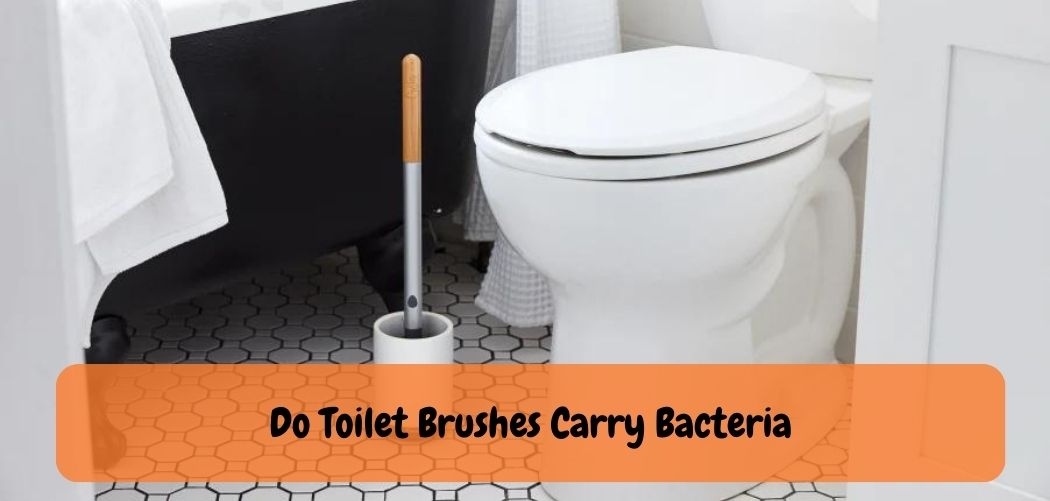Toilet brushes are essential tools for maintaining cleanliness in our bathrooms. However, there has been ongoing concern and speculation about whether toilet brushes carry bacteria and pose a risk to our health.
In this informative guide, we will delve into the topic of whether toilet brushes can harbor bacteria and provide valuable insights to help you understand the potential risks, proper cleaning techniques, and overall hygiene considerations associated with these cleaning tools.
By gaining a deeper understanding of the factors that contribute to bacterial growth, adopting effective cleaning practices, and exploring alternative cleaning options
We can make informed decisions and maintain a clean and sanitary bathroom environment. Join us as we unravel the truth about whether toilet brushes carry bacteria and how to minimize any potential risks.
The Toilet Brushes Carry Bacteria
Toilet brushes are a common tool used for maintaining cleanliness in bathrooms. However, concerns have been raised about whether these brushes carry bacteria and pose a potential risk to our health.
In this informative guide, we will explore the topic of whether toilet brushes can harbor bacteria and provide valuable insights to help you understand the risks, proper cleaning techniques, and overall hygiene considerations associated with these cleaning tools.
Section 1: Understanding Bacterial Contamination
1.1 Potential for Bacterial Growth:
The moist and warm environment of a bathroom can create conditions that promote bacterial growth.
Toilet brushes, if not properly cleaned and maintained, can potentially harbor bacteria and other microorganisms.
1.2 Common Bacteria Found on Toilet Brushes:
Studies have shown that bacteria commonly found on toilet brushes include E. coli, Salmonella, and other fecal-borne bacteria.
These bacteria can be introduced onto the brush during use and can persist if not adequately cleaned.
Section 2: Minimizing Bacterial Contamination
2.1 Proper Cleaning Techniques:
Rinse the toilet brush thoroughly after each use to remove any residual waste.
Use a disinfectant, such as bleach or toilet bowl cleaner, to sanitize the brush regularly.
Allow the brush to air dry completely before storing it.
2.2 Regular Replacement:
Over time, the bristles of a toilet brush can wear down or become frayed, making them more difficult to clean.
Regularly replacing the brush ensures optimal cleaning performance and minimizes the potential for bacterial contamination.
Section 3: Exploring Alternative Cleaning Options
3.1 Disposable Toilet Brushes:
Disposable toilet brushes offer convenience and hygiene benefits.
These brushes come with disposable heads that can be easily replaced after each use, reducing the risk of bacterial contamination.
3.2 Silicone Bristle Brushes:
Silicone bristle brushes are easier to clean and can be more resistant to bacterial growth compared to traditional bristle brushes.
Consider using a silicone bristle brush as an alternative to a traditional toilet brush.
Section 4: Maintaining Overall Bathroom Hygiene
4.1 Comprehensive Bathroom Cleaning:
Regularly clean and disinfect all bathroom surfaces, including the toilet, sink, and countertops, to prevent the spread of bacteria.
4.2 Personal Hygiene Practices:
Emphasize proper handwashing after using the toilet to minimize the risk of bacterial transfer.
Also Read: Who Invented the Toilet Brush?
Should You Use a Toilet Brush to Clean Poop?

Using a toilet brush to clean up poop is not recommended. Instead, it is best to use gloves and a scooping motion with a disposable paper product or rag. Toilet brushes can actually spread bacteria from fecal matter onto other surfaces, potentially leading to cross-contamination and illness.
Additionally, the bristles on some brushes are too abrasive for sensitive skin, which can cause irritation when coming into contact with waste material. Furthermore, if you do decide to use a toilet brush to clean up after yourself or someone else has been in the bathroom, be sure to thoroughly sanitize it afterwards in order to prevent any further spread of bacteria.
How I Disinfect My Toilet Brush Before Testing Toilet Bowl Cleaners!
Conclusion
the question of whether toilet brushes carry bacteria is a valid concern for maintaining a clean and sanitary bathroom. While it is true that toilet brushes can harbor bacteria if not properly cleaned and maintained, there are measures you can take to minimize any potential risks.
By following proper cleaning techniques, such as rinsing the brush thoroughly after each use, using disinfectants, and allowing it to dry completely, you can effectively reduce the presence of bacteria on the brush. Additionally, considering alternative cleaning options, such as disposable toilet brushes or silicone bristle brushes that are easier to clean, can provide added peace of mind in terms of hygiene.
It is important to note that maintaining overall bathroom hygiene is crucial. Regularly cleaning and disinfecting all bathroom surfaces, including the toilet, sink, and countertops, is essential for preventing the spread of bacteria.
While toilet brushes may carry bacteria if not properly maintained, by adopting proper cleaning practices and incorporating other hygiene measures, you can ensure a clean and sanitary bathroom environment. Choose the cleaning methods and tools that align with your preferences and hygiene standards, and enjoy a hygienic and pleasant restroom experience for you and your household.
